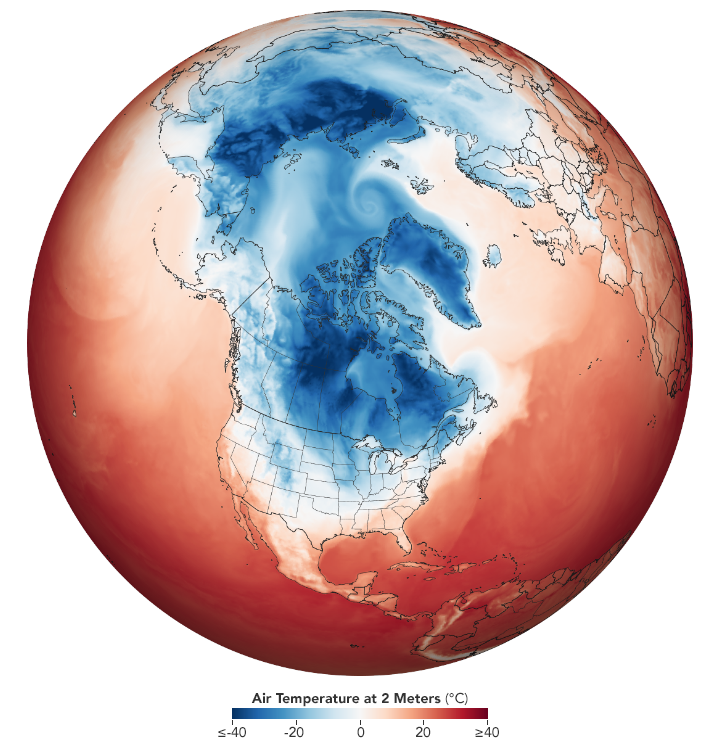Tested: Idea that sea ice steadies jet stream, blocking cold winters

Enlarge / Cold weather for the Midwest on January 29, 2019. (credit: NASA Earth Observatory)
A lot has been made of the possibility that the loss of Arctic sea ice could make mid-latitude weather weirder by causing wriggling meanders in the jet stream. One possible manifestation of that is bitter cold snaps in winter, as Arctic air slides south along with the jet stream boundary. There is a correlation between cold mid-latitude winters and low sea ice cover in the Arctic. But does the one really cause the other?
The possible relationship between a warming Arctic and changing behavior of the jet stream is still a matter of real scientific debate. For a number of reasons, it's a difficult question to resolve. In this case, a team led by the University of Exeter's Russell Blackport tried to disentangle the chain of events with a clever analysis.
Checking causalityUltimately, the question is whether shrinking sea ice allows the ocean to warm the atmosphere, or whether the warm air forms separately and then melts the sea ice. The researchers used a pair of climate models and global maps of observed weather; the measurement gaps were filled in by simulated physics. First, the team categorized each winter in North America and Asia based on two measures: cooler or warmer mid-latitude temperatures and lower or higher Arctic sea ice. As in other studies, they found a correlation between the two.
Read 6 remaining paragraphs | Comments